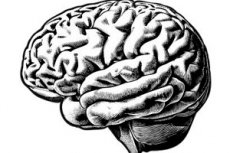
由辛辛那提儿童医院专家领导的团队进行的新研究创造了世界上第一个具有完全功能性的血脑屏障(BBB)的人类迷你大脑。
这一重大突破发表在《细胞干细胞》杂志上,有望加速对多种脑部疾病的理解和改善治疗,包括中风、脑血管病、脑癌、阿尔茨海默病、亨廷顿病、帕金森病和其他神经退行性疾病。
该研究的主要作者郭子远博士说:“缺乏真实的人类血脑屏障模型一直是研究神经系统疾病的一大障碍。”
我们的突破在于利用人类多能干细胞生成人类血脑屏障类器官,模拟人类神经血管发育,从而精确再现正在生长和运作的脑组织中的血脑屏障。这是一个重要的进展,因为我们目前使用的动物模型并不能准确反映人类大脑的发育和血脑屏障的功能。
什么是血脑屏障?
与我们身体的其他部分不同,大脑中的血管有一层额外的紧密排列的细胞,这严格限制了从血液进入中枢神经系统 (CNS) 的分子的大小。
正常运作的血脑屏障可以阻止有害物质进入大脑,同时允许重要的营养物质到达大脑,从而保持大脑健康。然而,这道屏障也阻止了许多潜在的有益药物进入大脑。此外,当血脑屏障无法正常形成或开始崩溃时,一些神经系统疾病就会引发或加重。
人类和动物大脑之间存在显著差异,这意味着许多使用动物模型开发的有前景的新药在人体测试时未能达到预期。
郭教授表示:“现在,通过干细胞生物工程,我们开发出了一个基于人类干细胞的创新平台,使我们能够研究控制血脑屏障功能和功能障碍的复杂机制。这为药物研发和治疗干预提供了前所未有的机遇。”
解决长期存在的问题
世界各地的研究团队正在竞相开发脑类器官——一种模拟大脑早期形成阶段的微小、可生长的3D结构。与在实验室培养皿中培养的细胞不同,类器官细胞彼此连接。它们自组织成球形,并相互“交流”,就像人类细胞在胚胎发育过程中那样。
辛辛那提儿童医院在开发其他类型的类器官方面一直处于领先地位,其中包括世界上第一个功能性肠道、胃部和食道类器官。但在此之前,还没有哪个研究中心成功构建出包含人脑血管中特殊屏障层的脑类器官。
我们称它们为新模型“BBB 组装体”
研究团队将他们的新模型命名为“BBB组装体”。其名称反映了促成这一突破的成就。这些组装体结合了两种不同类型的类器官:复制人类脑组织的脑类器官和模拟血管结构的血管类器官。
合并过程始于直径3-4毫米的脑类器官和直径约1毫米的血管类器官。在大约一个月的时间里,这些独立的结构融合成一个直径略大于4毫米(约1/8英寸,相当于一粒芝麻大小)的球体。

图片描述:融合两种类器官,构建包含血脑屏障的人脑类器官的过程。图片来源:辛辛那提儿童医院和细胞干细胞中心。
这些整合的类器官重现了人类大脑中许多复杂的血管神经相互作用,但它们并非完整的大脑模型。例如,该组织不含免疫细胞,也与身体其他神经系统没有连接。
辛辛那提儿童医院的研究团队在融合和分层不同细胞类型的类器官方面取得了其他进展,从而创造出了更复杂的“下一代类器官”。这些进展为构建脑类器官的新研究提供了参考。
重要的是,可以使用神经典型人类干细胞或患有某些脑部疾病的人的干细胞来培养 BBB 组件,从而反映可能导致血脑屏障功能受损的基因变异和其他状况。
初步概念验证
为了证明新型组装体的潜在用途,研究小组使用了一系列来自患者的干细胞来创建组装体,以准确再现一种名为脑海绵状畸形的罕见脑部疾病的关键特征。
这种遗传性疾病的特征是血脑屏障完整性的破坏,导致脑内出现大量异常血管,其外观常类似于覆盆子。这种疾病会显著增加中风的风险。
郭说:“我们的模型准确地重现了疾病表型,为脑血管疾病的分子和细胞病理学提供了新的见解。”
潜在应用
合著者们看到了 BBB 组件的多种潜在应用:
- 个性化药物筛选:患者衍生的 BBB 组件可以作为化身,根据患者独特的基因和分子特征为其量身定制治疗方案。
- 疾病建模:许多神经血管疾病,包括罕见和遗传复杂的疾病,目前都缺乏良好的研究模型系统。成功构建血脑屏障组件或将加速开发适用于更广泛疾病的人类脑组织模型。
- 高通量药物发现:扩大组装体生产可以更准确、快速地分析潜在的脑药物是否能有效穿过血脑屏障。
- 环境毒素测试:BBB 组件通常基于动物模型系统,可帮助评估环境污染物、药物和其他化合物的毒性作用。
- 免疫疗法发展:通过探索 BBB 在神经炎症和神经退行性疾病中的作用,新的组件可能支持向大脑提供免疫疗法。
- 生物工程和生物材料研究:生物医学工程师和材料科学家可以利用实验室 BBB 模型来测试新的生物材料、药物输送载体和组织工程策略。
郭说:“总的来说,BBB 组装代表着一项革命性的技术,对神经科学、药物发现和个性化医疗具有广泛的影响。”

